These Are the 14 Most Powerful Mythical Creatures, Based on Their Abilities
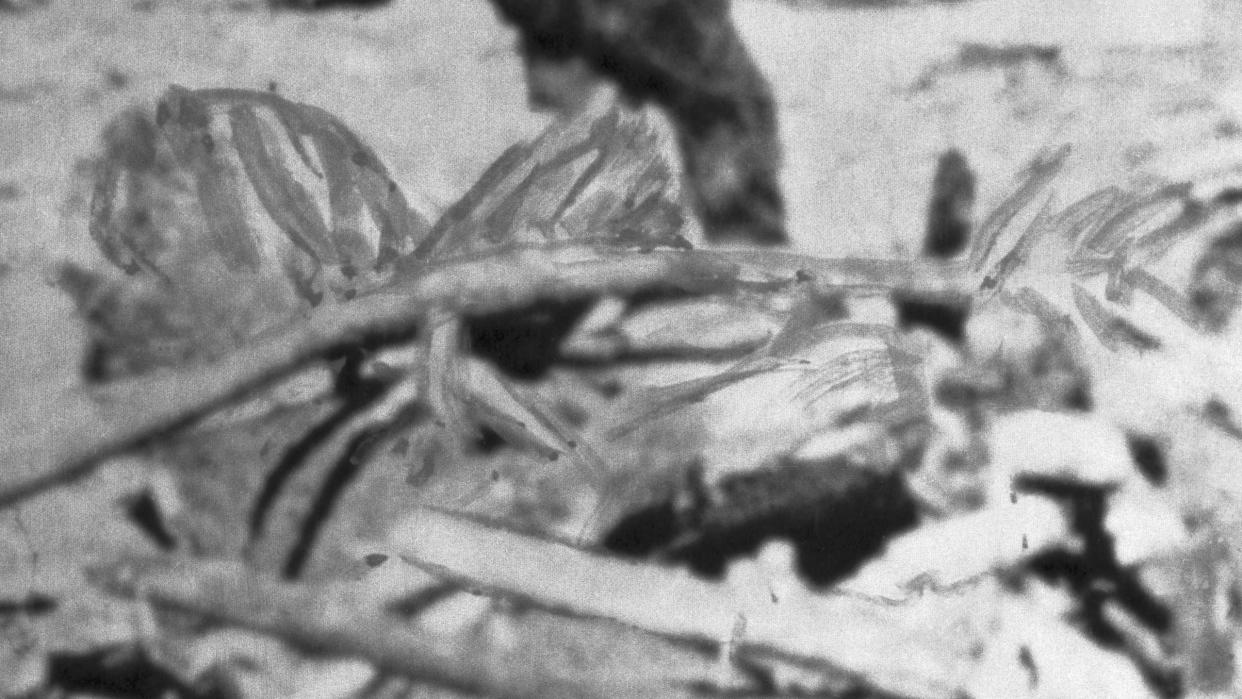
"Hearst Magazines and Yahoo may earn commission or revenue on some items through these links."
Ever since we started telling stories, mythical creatures have fascinated and terrified humans with their unnatural physiology and deadly power. This is why their tales have endured for centuries. Here are our 14 favorite legendary beasts, ranked by their abilities, origin stories, and all-around badassery.
📖 More From Popular Mechanics:
The Truth About the Black Knight Satellite Conspiracy Theory
Why Conspiracy Theorists Refuse to Believe the Challenger Astronauts Died
14. Loch Ness Monster
Origin: Scottish
Ah, the Loch Ness Monster. The fabled creature that mankind has been hunting for thousands of years. The Loch Ness Monster is believed to be some kind of plesiosaur that has managed to endure in the Scottish Loch Ness Lake.
Although Nessie doesn’t have any powers (that we know of) and despite the fact that there’s also no hard evidence she exists, she’s here because of the wonder and fascination she managed to maintain—real or not—all this time. And it’s been a long time—the first stories about her presence in the loch appeared way back in 565 A.D., in the biography of the Christian Irish missionary St. Columba.
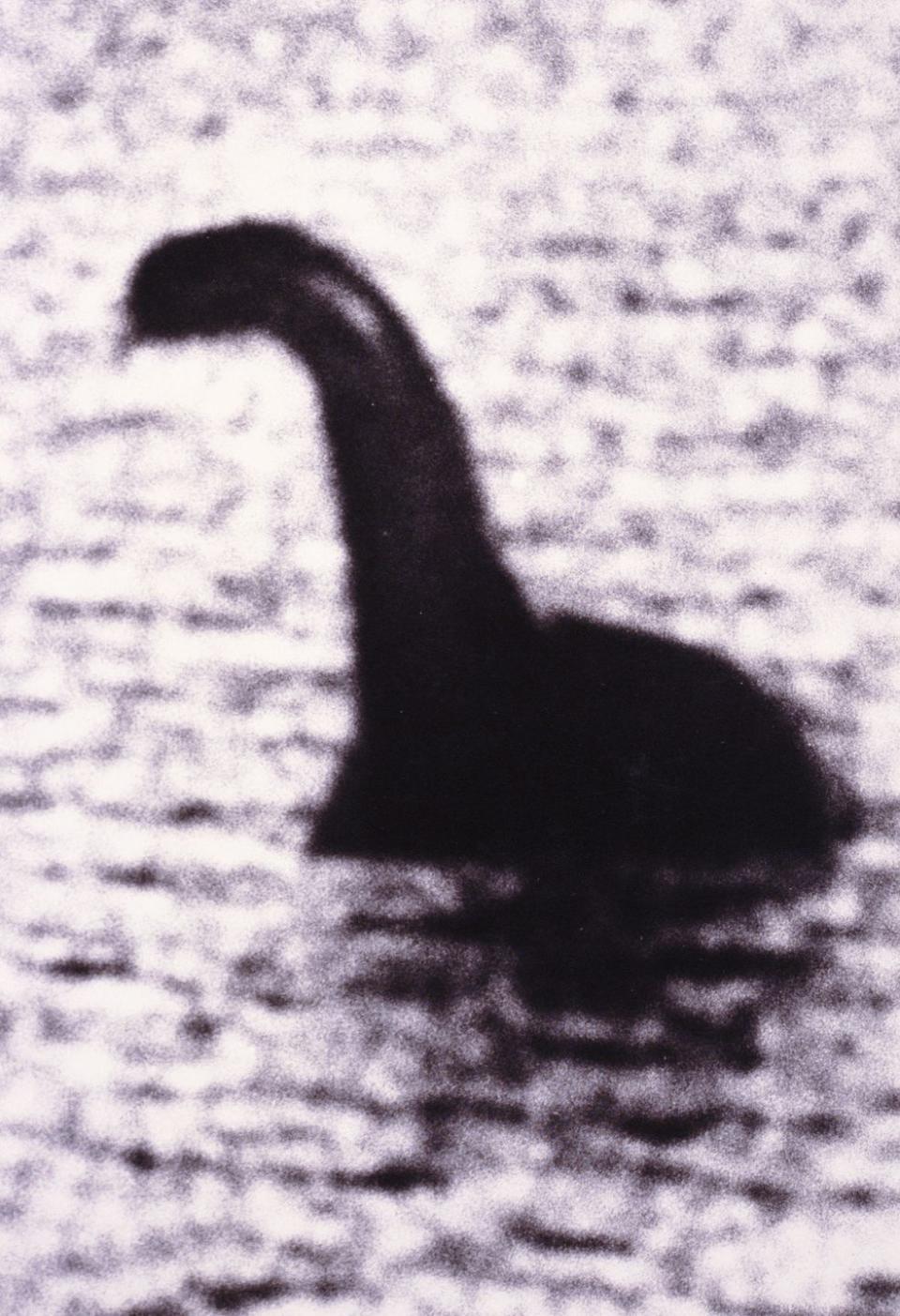
13. Bigfoot
Origin: Unknown
Bigfoot is thought to be the missing link between humans and apes—we’d know for sure if only we could find one. The legend of Bigfoot comes from Native American mythology and folklore surrounding European “Wild Man” stories.
There are people who have dedicated their lives to finding Bigfoot, and there are even photos, like the one shown here, that offer “proof” of Bigfoot’s existence. In fact, Bigfoot has his very own official FBI file, but so far, despite myriad claims from several sources across the U.S., no one has managed to definitively prove that the mighty Sasquatch exists.
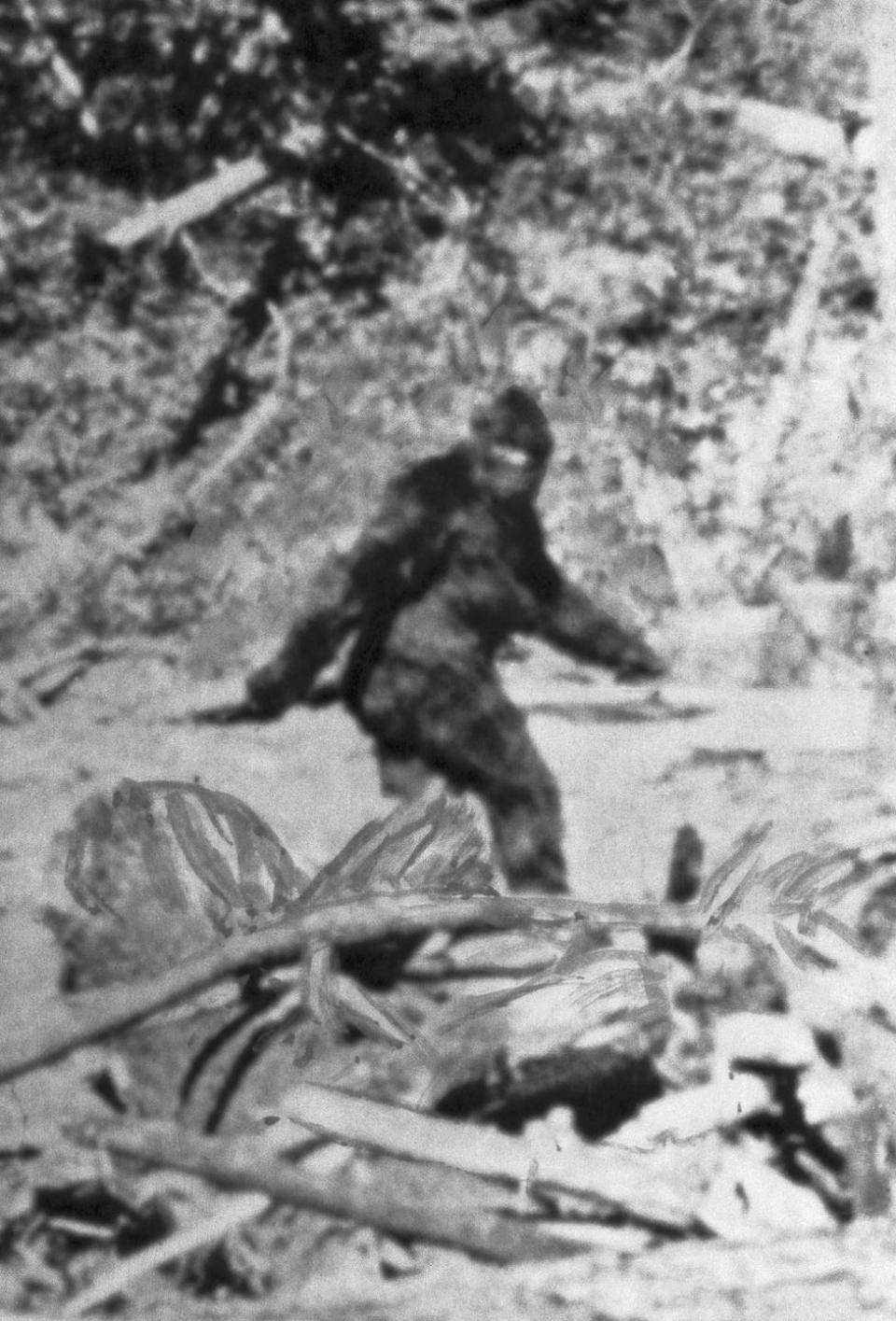
12. Jersey Devil
Origin: American
The Jersey Devil haunts New Jersey’s Pine Barrens and has reportedly been around since 1735. This creature is grotesque in appearance, as you can see in this depiction, having horned protrusions in addition to a tail and leathery wings. It walks on its two hind legs, which end in cloven hooves.
Some versions of the Jersey Devil myth say the creature was born to one of Daniel Leeds’ wives, who was a witch. Shortly after the beast was born, it sprouted wings, let out a screeching yell, and flew off into the night.
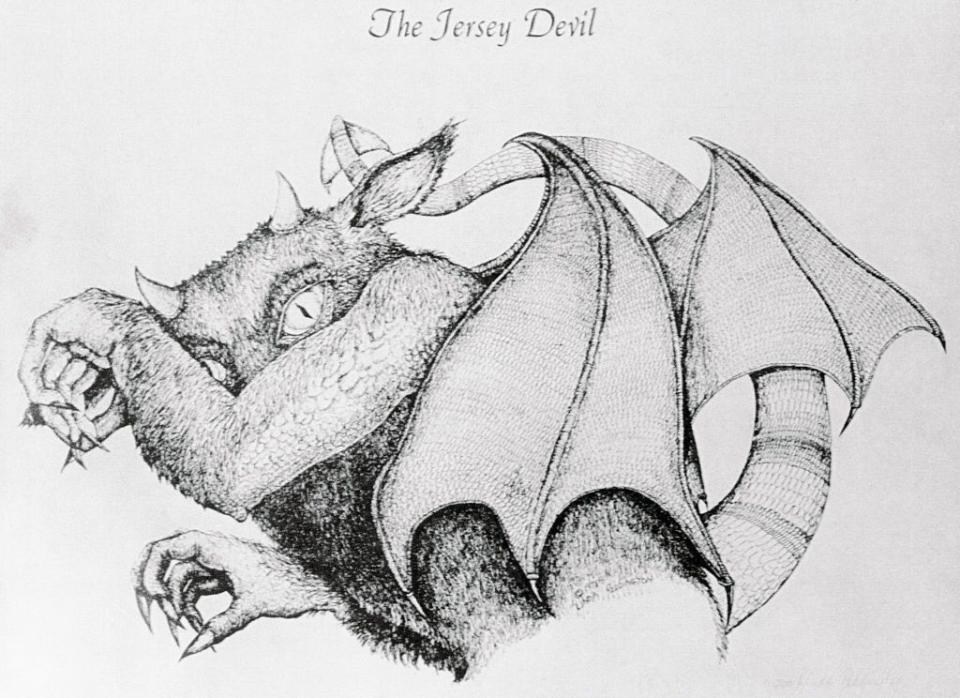
11. Abominable Snowman
Origin: Asian
You might know the Abominable Snowman by another name, like Yeti. But no matter what you call it, all the stories tend to be same: somewhere in the mountains, there exists a bipedal, humanoid creature that leaves behind massive tracks, but has never been seen or caught on film.
A small Nepalese village claimed to have a Yeti scalp, pictured here, that’s over 300 years old. An analysis, however, showed the scalp had actually been made out of animal hide, but locals still treat it like a treasure nonetheless.
The Yeti myth had endured, in part, because of the sensationalism surrounding the mystery of the creature’s existence, but also thanks to locals who keep the stories alive.
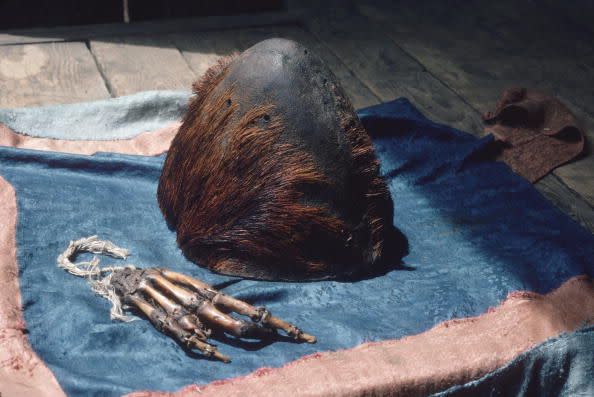
10. Sirens
Origin: Greek
Sirens are another mythological species that have found a home in modern times. There are movies and TV shows about the seductresses with beautiful and enchanted singing voices who draw sailors to their deaths.
Sirens, more popularly known as mermaids, are also mentioned in Homer’s Odyssey, where Odysseus famously had his crew tie him to the mast of the ship (pictured) because he wanted to hear the Siren song. Odysseus was cautious and had his crew fill their ears with wax so they’d be unaffected by the sound. And it worked. Sirens are sometimes mentioned interchangeably with Harpies, another kind of mythological creature who are half bird, half human, but it varies myth to myth.
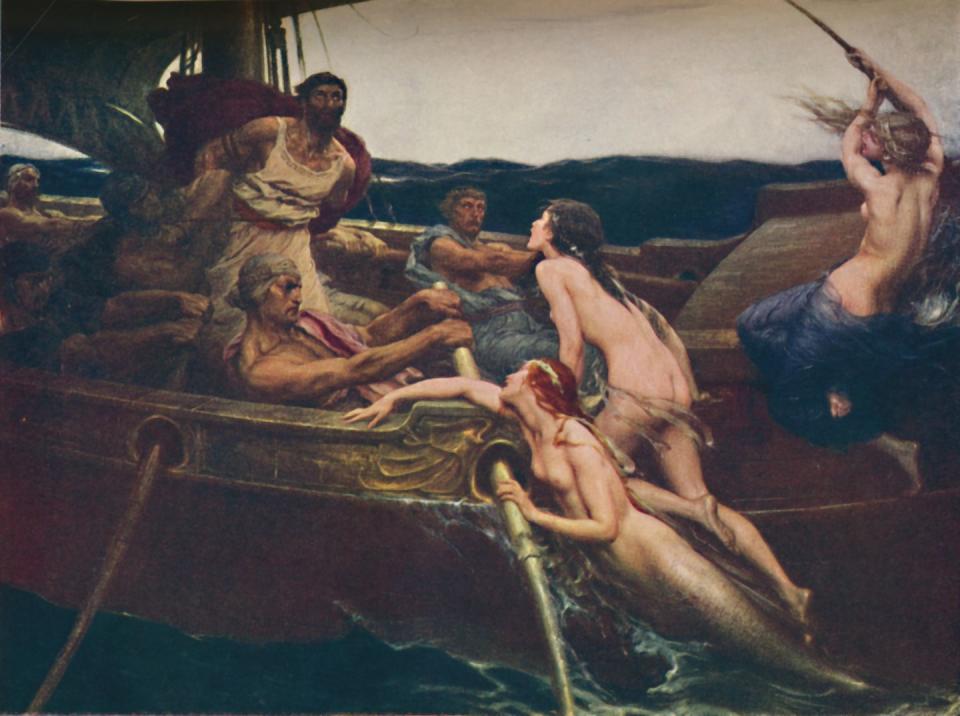
9. Chimera
Origin: Greek
The mythological Chimera is a terrifying creature that features a fire-breathing lion’s head attached to a goat’s body, ending in a serpent tail. There are varying versions of what a Chimera actually looks like, with some iterations giving the creature three heads—a lion, a goat, and a dragon—among other interesting interpretations. According to Greek mythology, the Chimera is the offspring of the monster Typhoeus and his partner, Echidna, who was half-woman and half-snake.
In scientific terms, a chimera is an organism with two or more genotypes; a fetus that has absorbed a deceased twin, for instance, is a chimera. Some believe the chimera is actually a personification of Mt. Chimera, a long-gone mountain that was always on fire, in Turkey.
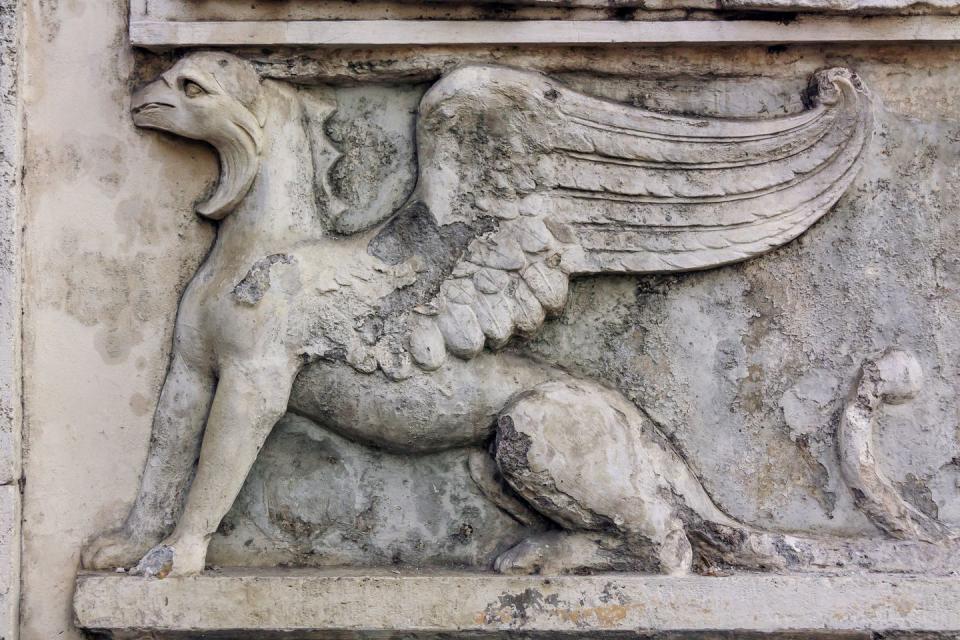
8. Minotaur
Origin: Greek
The Minotaur, whose birth name was Asterion, is another fabled creature from Greek mythology. The man-bull hybrid was the product of an affair between Queen Pasiphaë and a bull—hence its weird anatomy.
In order to keep the Minotaur and his ravenous hunger for humans locked away, Daedalus and his son Icarus—you know, the one who flew too close to the sun—built a maze to contain it at the behest of King Minos, Pasiphaë’s husband.
To sate the Minotaur’s appetite and keep him within the confines of the maze, the creature was offered human sacrifices. The Minotaur, who is said to have grown into a monstrous, evil beast, lived in the maze until the hero, Theseus, killed it.
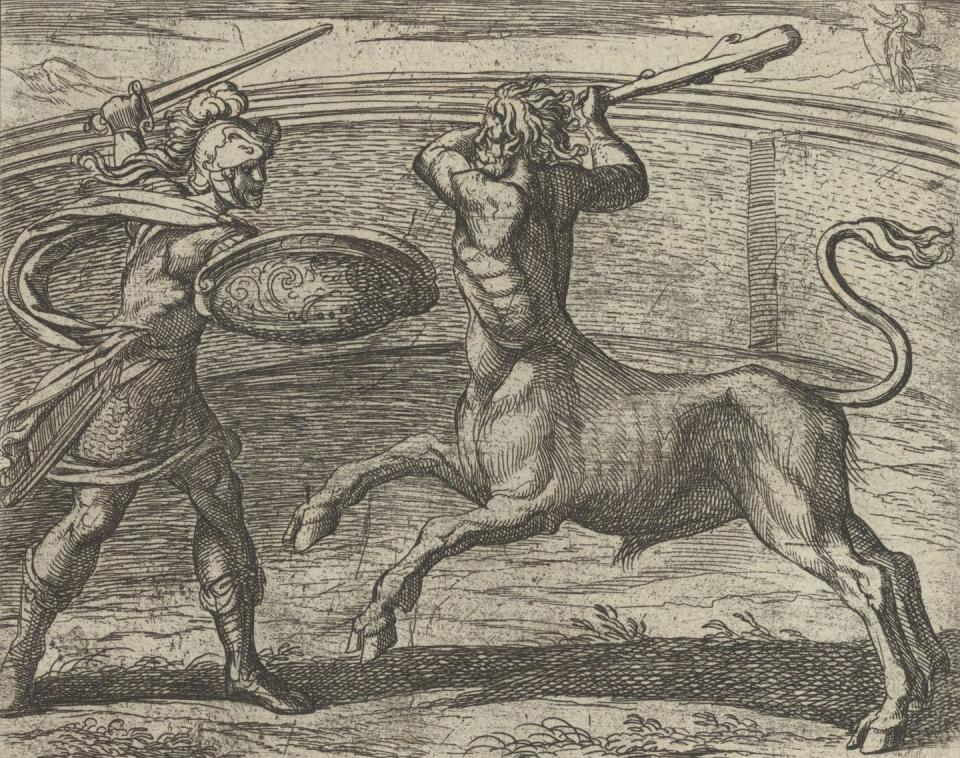
7. Zombies
Origin: Greek, Haitian
Zombies have instilled terror in our hearts ever since they hit the big screen in classic flicks like Night of the Living Dead. However, these creatures have been terrorizing Haitian culture for far longer than a few decades’ worth of films and shows.
The ancient Greeks seemed to fear an uprising of the dead as they buried people with stones on top of their bodies in order to prevent them from leaving their graves. In the 17th century, slaves on sugar cane plantations worked under grueling conditions, and necromancy, an undead afterlife, “represented the horrific plight of slavery,” History reports. In the Voodoo religion, there are also “Bokors,” or practitioners who have the power to reanimate the dead.
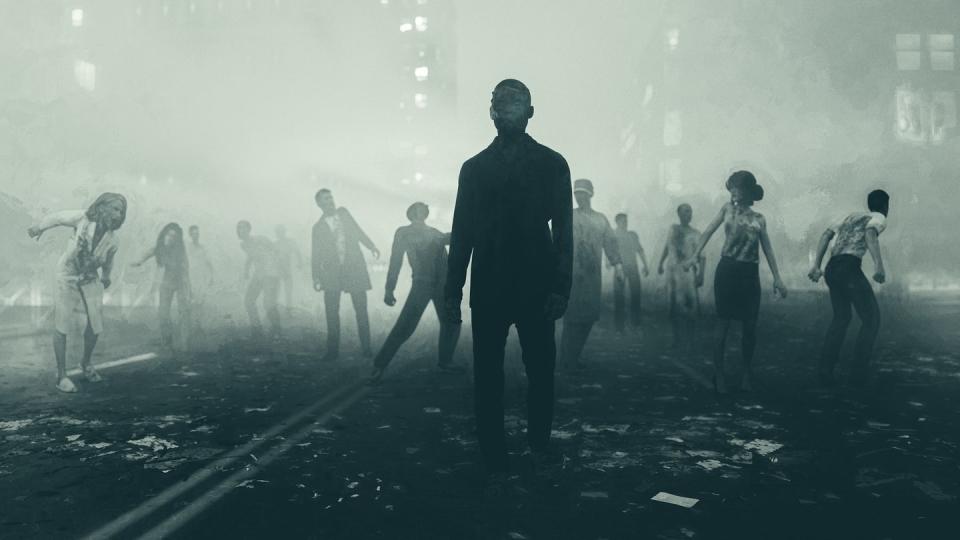
6. Werewolf
Origin: Unknown
The werewolf myth is so prevalent across multiple cultures that it’s hard to pinpoint exactly where it originated. Werewolves have had their stories told millions of times over, with each iteration giving the creatures a different power, a different reason to shift from a human into a beast, and providing humans with different methods of killing them—although, a silver bullet usually seems to be the way to go.
Greek mythology introduced werewolves with the tale of the king of Arcadia, Lycaon, who tried to serve a sacrificed child for Zeus to eat. The story goes that Zeus was so angry at Lycaon’s crass offering that he turned the king and all of his sons into werewolves. There’s also Fenrir, the beast from the Norse pantheon who, although not a werewolf per se, deserves an honorable mention for being the gnarliest wolf ever. Norse mythology says Fenrir, the son of Loki and Angrboda, would bring about Ragnarök and devour Odin.
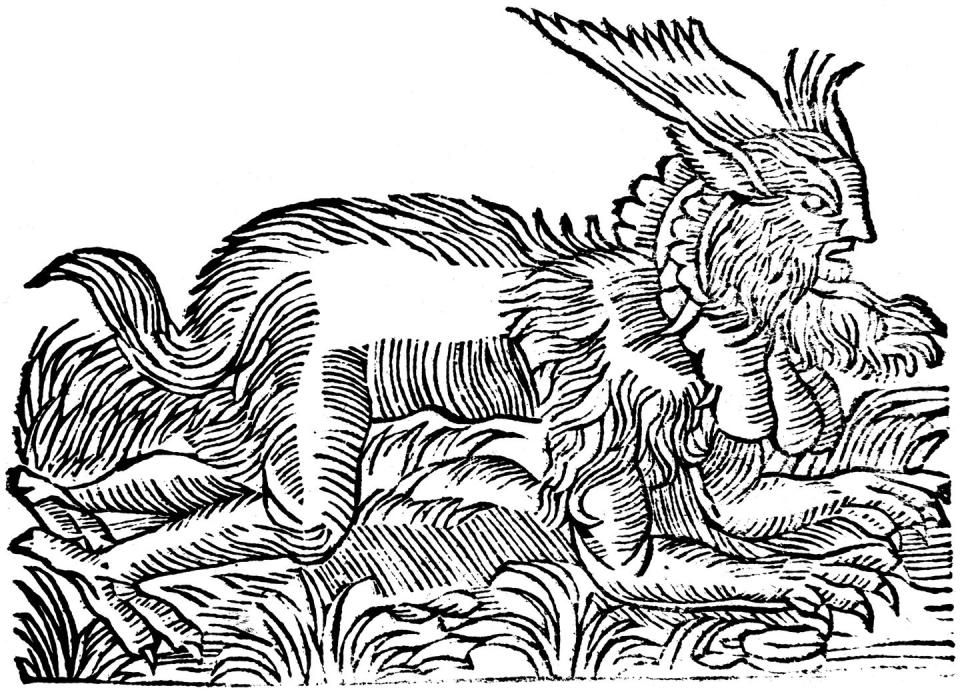
5. Vampires
Origin: Eastern European
The world’s most famous vampire is undoubtedly Bram Stoker’s Dracula, who Stoker reportedly modeled after Romanian Prince Vlad Tepes, more popularly known as Vlad the Impaler (pictured).
While most people can name a few vampiric characteristics, there are actually no set parameters for what a vampire can and can’t do because there are “no firmly established characteristics,” according to Live Science. The vampires we’re familiar with today are the ones that tend be glamorous—they’re rich and good looking, but still have to suck blood to survive.
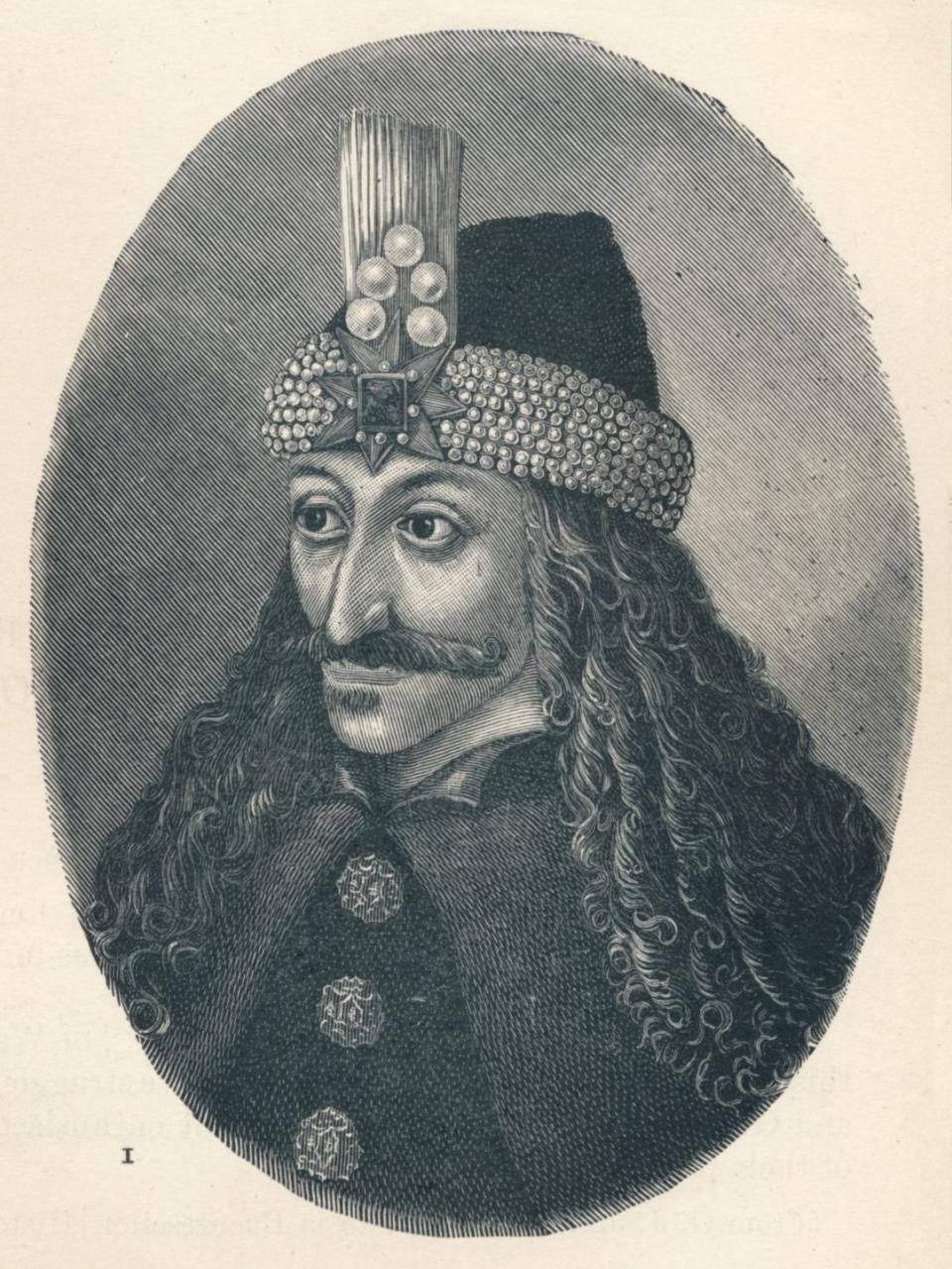
4. Basilisk
Origin: Unknown
Some reports say the Basilisk originated in Italian lore, while others say it was born from Greek mythology. According to lore, the Basilisk had the power to kill people with a single glance—similar to Medusa, although the two are not interchangeable. The creature emerged from a rooster’s egg after being incubated by a toad, and had the power “to wither landscapes with its breath,” according to the Smithsonian.
The Basilisk has been around for a long time, with the earliest written reports dating back to a mention in Pliny the Elder’s Natural History in 79 A.D. The Basilisk was often referred to as the king of serpents and has been described in varying detail as being a mix of snake and rooster.
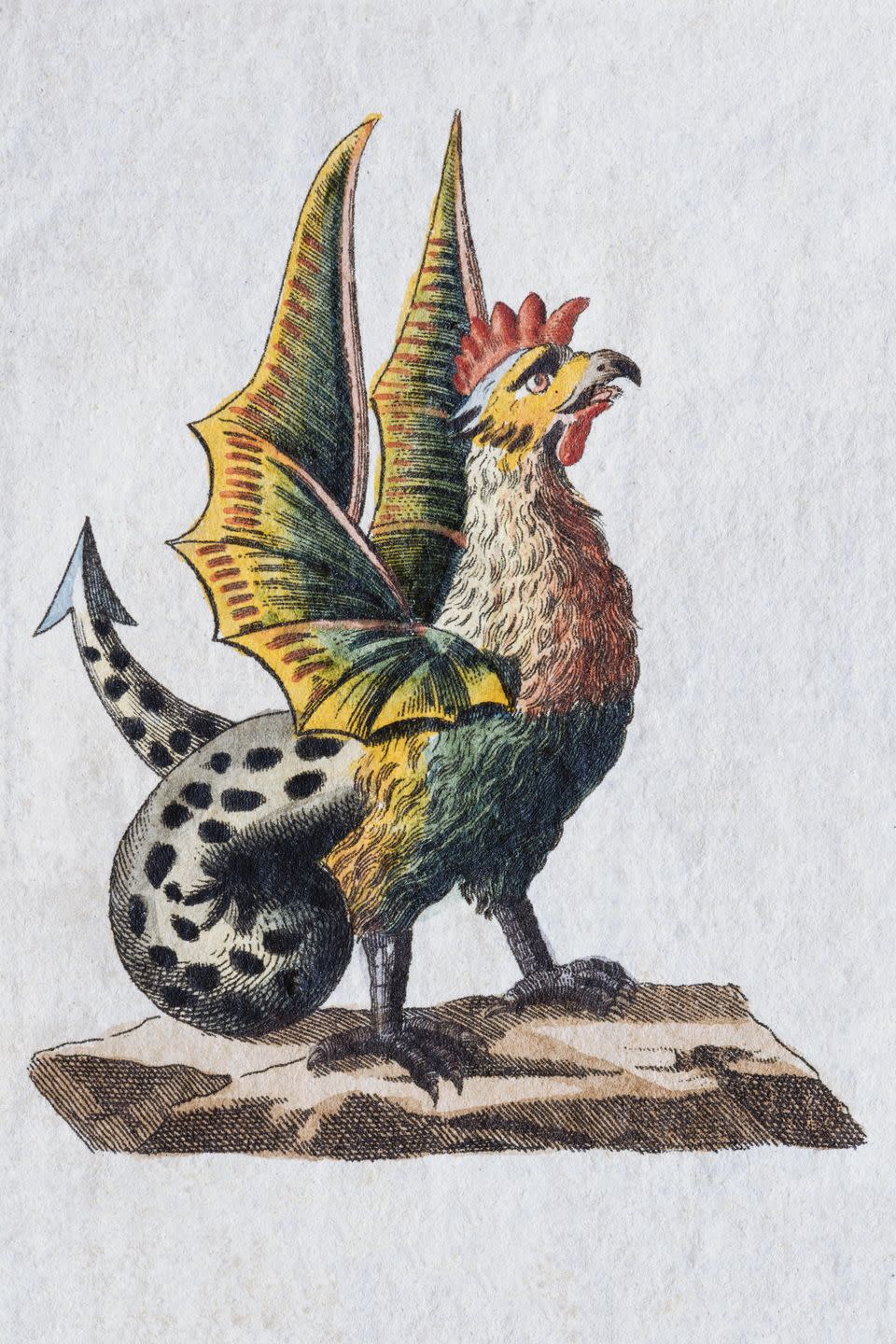
3. Kraken
Origin: Nordic Folklore
The mythical Kraken is one of the scariest monsters ever imagined. One of the earliest mentions of the gigantic cephalopod came from Swedish King Sverre of Norway in 1180. Some said the creature was so massive, it could eat maritime crews whole and sink ships in an instant.
Although descriptions of the beast in folklore vary to some degree, the general consensus is the Kraken was likely Architeuthis dux—more commonly known as the giant squid. We put the Kraken near the top of the list because it’s one of the most fearsome creatures in the world—and it’s based off of an animal that actually exists.
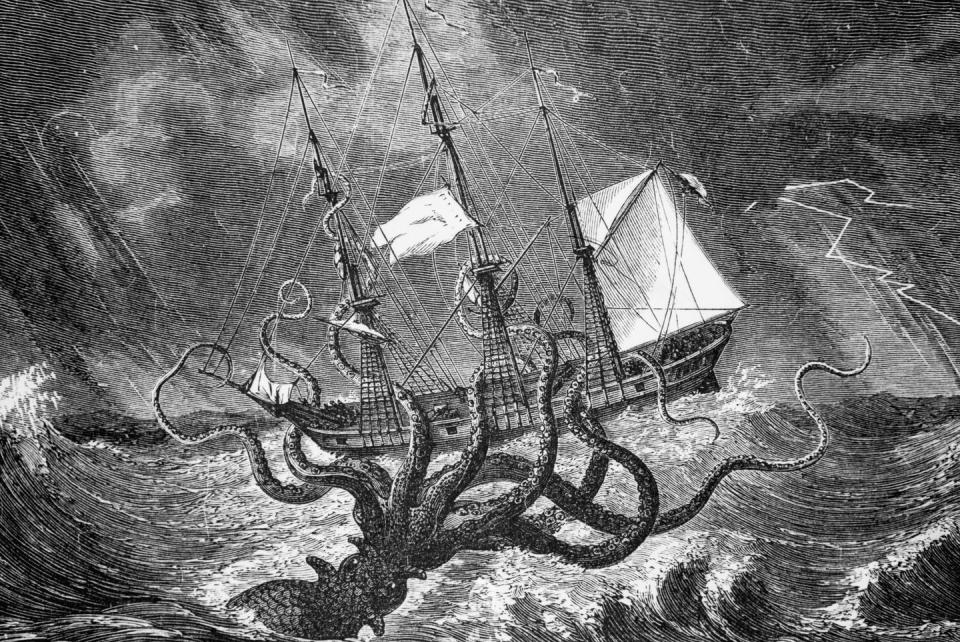
2. Medusa
Origin: Greek
Medusa is one of the most powerful mythological figures of all time. She had the power to petrify a person with a single glance—and we mean quite literally turn a person to stone.
According to a Roman version of this myth, Medusa was seduced by Poseidon in a temple of Athena, a sacrilegious act that enraged the Greek goddess of war so much, she turned the mortal Medusa into a hideous beast with snakes for hair.
In Theogony, the Greek poet Hesiod wrote that Medusa was one of three Gorgon sisters who also happened to be the only mortal of the trio. If you follow Hesiod’s translation of the myth, Medusa and her sisters were born with snakes for hair and the power to turn anyone who gazed upon them to stone—a bit different from the Roman myth.
Most of the myths, however, end the same way: the hero Perseus slays Medusa by cutting off her head. Even after being beheaded, Medusa’s visage still had the power to turn men to stone, and so Perseus carried it in a kybisis, a magical sack strong enough to contain its power.
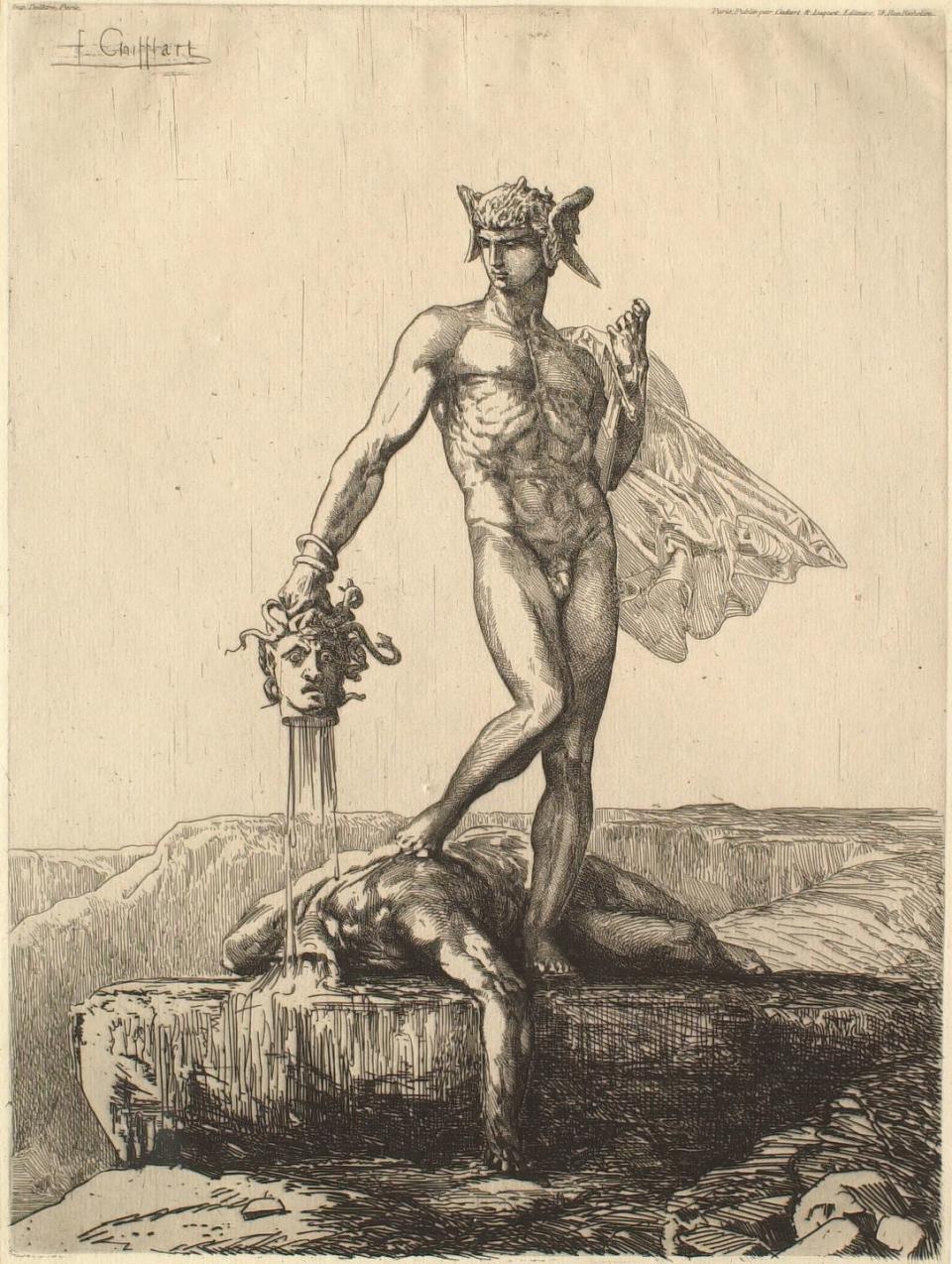
1. Dragon
Origin: Unknown, although several cultures including those in America, India, and China have myths regarding the creatures.
Live Science reports that “huge, flying serpents were described at least as early as the age of the ancient Greeks and Sumerians,” and says interpretations are varied across cultures. In some parts of the world, such as China, dragons were revered or viewed as gods, and in others, they were feared (especially after Christianity became widespread) since many people associated them with Satan or Leviathan.
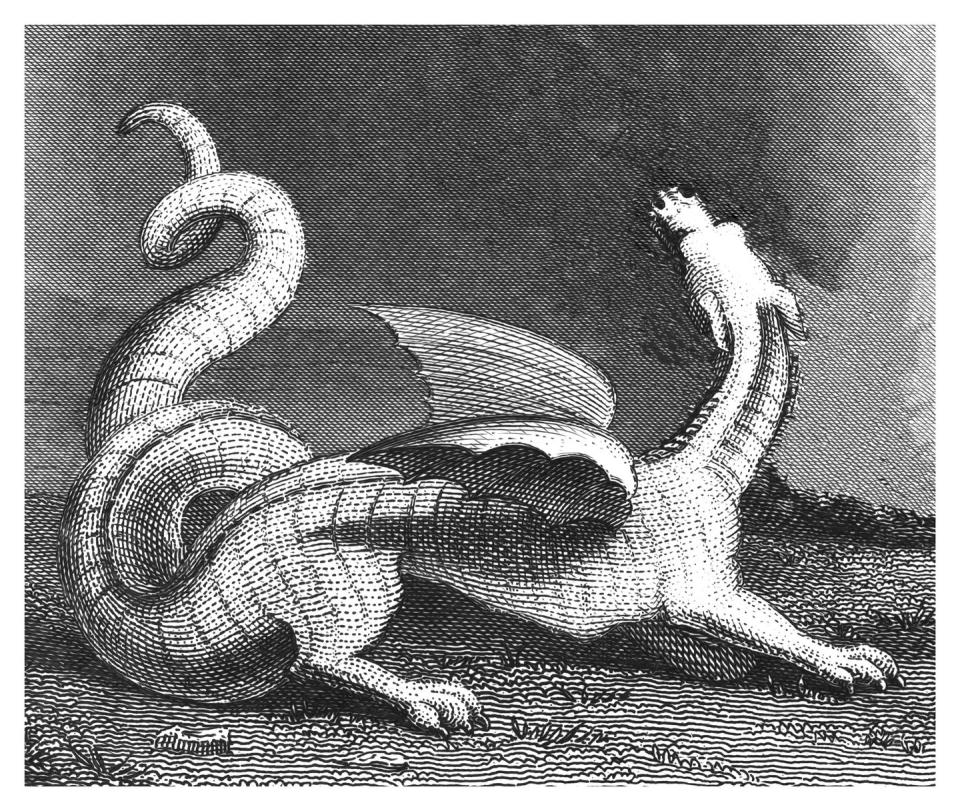
You Might Also Like

